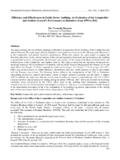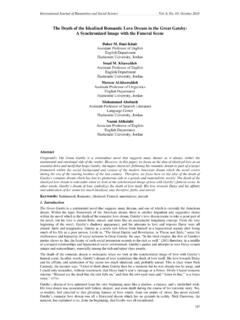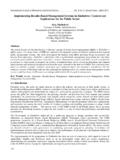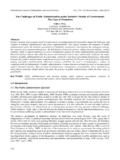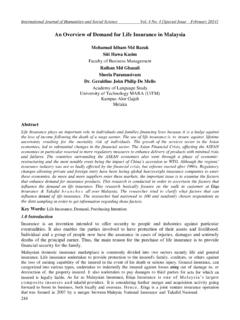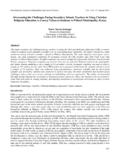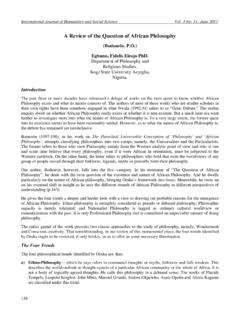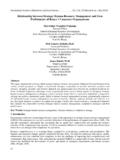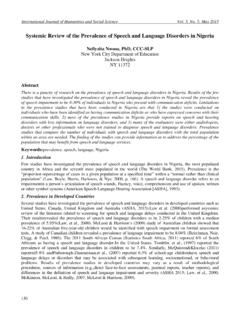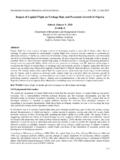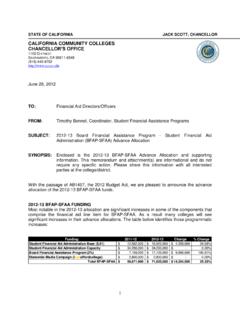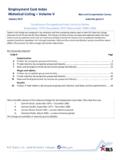Transcription of Capturing Effect of Exchange Rates on Exports: (A Case ...
1 International Journal of Humanities and Social Science Vol. 6, No. 3; march 2016. Capturing Effect of Exchange Rates on Exports: ( a case developing economy ). Asad Saleem Malik Raza Hassan Syed Asim Shah Abdul Ghafoor Faculty of Management Sciences National University of Modern Languages, NUML. Islamabad, Pakistan Abstract The paper recapitulates the current theory of Capturing Effect of Exchange Rates on exports, besides looking into what determines Exchange rate itself. The paper investigates the relationship between Exchange Rates and exports in Pakistan, using time series analysis and annual data from 1981 - 2010. The structural equation model is used to find out the relations of the variables in the model with help of the regression equations. The empirical results indicate that Exchange Rates have significant Effect on exports. The results imply that Exchange Rates are important for exports. Imports, exports and foreign direct investment first individually estimated than used the estimated values in main equation of the study.
2 Key Words: Exchange rate, Capturing Effect , structural equation model, foreign direct investment, export &. import. 1. Introduction & Background of the Study The world has become a global village. One of the important and major benefit of the globalization is that the size of international trade has grown very rapidly. This has increased the need for foreign currencies to make international transactions of goods and services and the need to have a stable Exchange rate. Exchange rate plays a very vital role in today's world economies. For a country like Pakistan where fluctuations in currency are very subtle Exchange rate stability is an important requisite for economic growth and stability. These fluctuations in Exchange rate may influence both the monetary and real sectors of the economy favorably or unfavorably, depending upon the relationship shared. However, Exchange rate is also influenced by the performance of macro economy .
3 A growing body of literature has recently focused on Exchange rate and its interaction with macro-economic variables. It is now widely recognized that Exchange rate play a vital and important role in the economic development and growth of an economy . However, despite its vital role in country growth and economic development, Exchange rate did not receive much attention of the academicians and researchers in Pakistan. This research will investigate the determents of Exchange and exports of Pakistan. Initially people used to Exchange commodity for commodity known as barter system. After that era they used different commodities as currency such as cow heads, etc. For decades, the currencies of the world were backed by gold a piece of paper (currency) that are issued by any government represented the real amount of gold held by the issuing government. In the nineteenth century, the world saw many countries following the gold standard.
4 However, the gold standard was abandoned during the World War 1. As a consequence of this the Exchange market collapsed. However, certain countries made efforts for the revival of the gold standard in the 1920s. The Great Depression of 1929 in the resulted in the failure of all such efforts for the revival of the gold standard. According to the theory, the appreciation or depreciation of Exchange Rates (ER) affects the country's trade; appreciation of a country's currency makes exports expensive and imports cheap, and depreciation makes exports cheap and imports expensive. 112. ISSN 2220-8488 (Print), 2221-0989 (Online) Center for Promoting Ideas, USA This stated phenomenon is true for the two trade partners, but is also affected by certain other situations prevailing in the two trading countries. The foreign country's Exchange Rates with respect to her other major trade partners, availability and prices of the substitutes in foreign country and world over, consumers' income, trade openness and political situations are some other important factors affecting export and import trade.
5 Tracing and finding out the effects of the determinants of export might be easy when trade of certain known commodities between two specific countries is analyzed; but the case becomes cumbersome, and needs extra care when analysis of trade is required at aggregate level, for instance the topic of this piece of research - Exchange Rates and Pakistan's Exports: an analysis. In this research first think primarily about some very simple questions like what the Exchange Rates are (definition), how these are determined (or are autonomous in nature), they affect what and how, and specifically what relationship they have with exports . Review of literature Vergil (2003) Investigated, the relationship of Exchange rate with macro-economic variables in Turkey and the European Union. Their results show that there was a strong Effect of Exchange rate volatility on real exports in Turkey. Further, Exchange rate fluctuation has negative Effect on real exports in short-run in Germany.
6 Benita and Lauterbach (2007) found that the real Exchange rate volatility has a statistically significant opposite impact on real exports. A positive correlation was found in the panel data; countries with huge Exchange regime normally have higher real interest Rates and more central bank intervention for the purpose of controlling Exchange rate volatility. Kendal (2004) found a substantial relationship between Exchange Rates fluctuation and current account balance. The Breton Woods Agreement in 1944 introduced an Exchange rate system that remained in Effect till 1971. According to this agreement, the value of dollar was fixed in terms of gold. All other countries fixed the value of their currencies in terms of the dollar. However, this system proved detrimental to the economy and the balance of payment suffered significantly. Consequently the government suspended the convertibility of dollar into gold as the supply of dollar exceeded its demand.
7 Subsequently the Smithsonian agreement was enforced. However, it also failed to achieve the desired goals and ultimately countries were allowed to float their currencies. In a free float, the market demand and supply determine the Exchange value of a currency. Since then most of the countries in the world have followed a free float regime for their currencies Jakab and kovacs (1999) reported that nominal Exchange regimes do not play important role in tradable real Exchange rate fluctuation. They argued that policy of Exchange rate was not the main factor of real Exchange fluctuations. Instead supply shocks were the main determinants of Exchange rate fluctuation. Engel and West (2005) reported that Exchange rate fluctuations were helpful in explaining economic variables such as money, income, prices and interest Rates . They suggested that Exchange Rates can help forecast fundamental macroeconomic indicators. Dong (2006) on the other hand reported the influence of macroeconomic variables on Exchange rate.
8 They reported that monitory policy shocks, interest Rates and output gap significantly explained the variance of Exchange rate. Ijaz, Akhtar and Abbas (2002) concluded that there is a direct relationship between real Exchange rate and budget deficit. Further they concluded that budget deficit is both directly and indirectly affect the real Exchange Rates . There findings suggested that variations in real Exchange rate depends upon whether fiscal deficit is reduced by increasing taxes or lowering government expenditure. Lahr che-R vil and B nassy (2001) argued that the Exchange rate is of more important and major concern for both trade and foreign direct investment. They suggested that Exchange rate volatility also play a substantial role for attracting FDI, but they were unable to make evidence that influence the Exchange rate uncertainty on trade. Aqeel and Nishat (2005) investigated the determinants of growth in foreign direct investment (FDI) in Pakistan.
9 They further identified several factors or indicators affecting trade, fiscal and financial sectors in Pakistan economy by using co-integration and error correction model to specify variables in explaining the FDI in Pakistan. They considered the tariff rate, Exchange rate, tax rate, credit to private sector and index of general share prices. They found that the variables explained the flow of foreign direct investment by including wages and per capita GDP to measure the relative demand for labor and market size hypotheses. Schmidt (2001) reported that there is direct relationship between home currency depreciation and FDI outflows. He reported statistical significance for all industries except electric machinery. Kendal (2004) further reported that depreciation of the currency prevails to increase in real output. 113. International Journal of Humanities and Social Science Vol. 6, No. 3; march 2016. Rosengren and Eric (1992) reported that there has been a significant positive correlation between inward foreign direct investment in the United States and the US real Exchange Rates since1970.
10 Arizonan (1992) have concluded that nominal shocks in flexible Exchange rate regimes have reverse implications on investment behavior and a fixed Exchange rate encourage FDI. Some mail reason for established the relationship between Exchange rate and stocks prices. First, influence the decisions about monetary and fiscal policy Gavin (1989) stated that booming market having positive Effect cumulative demand. Sometimes decision maker makes not as much of expensive currency in order to boost the export sector. They should be aware whether such a policy might depress the stock market. Second currency normally is used in investment. Knowledge about the link between currency Rates and other assets in a portfolio is very important for the performance of the fund. Empirical Approach Research is based on structural equation modeling. Before estimating the main equation three further equations were developed and estimated.
